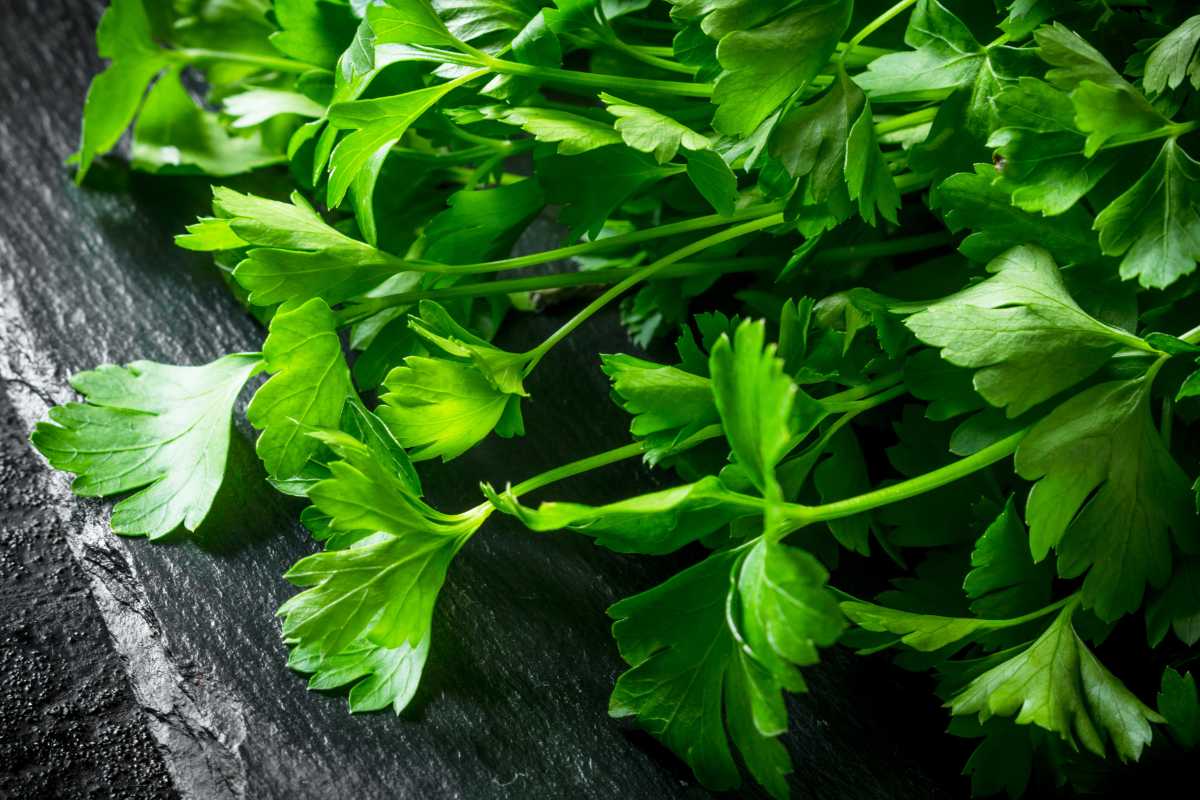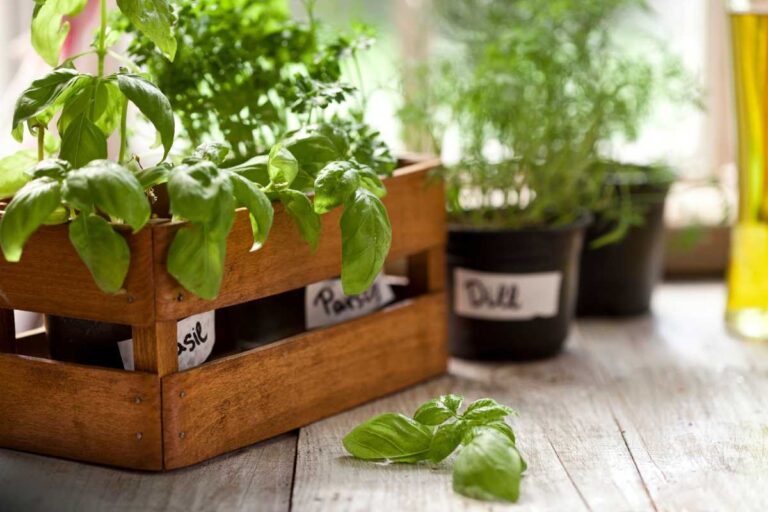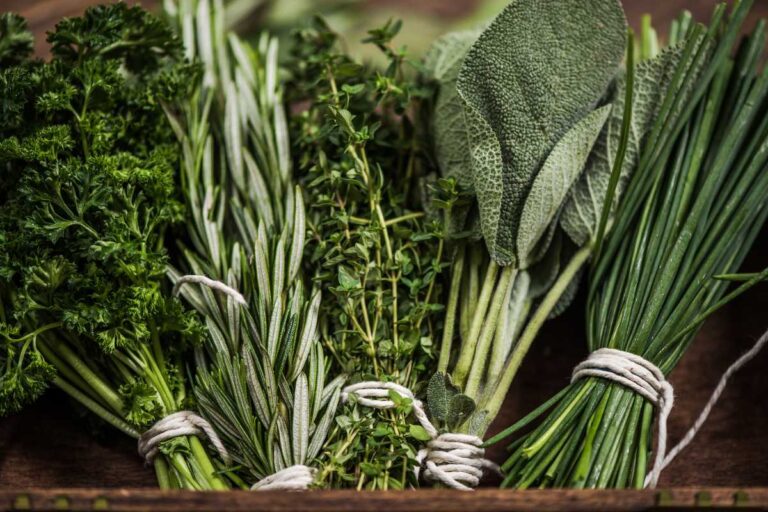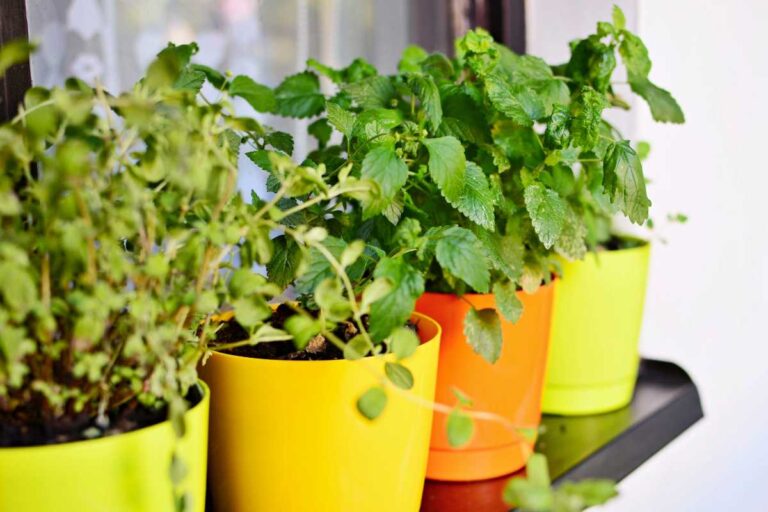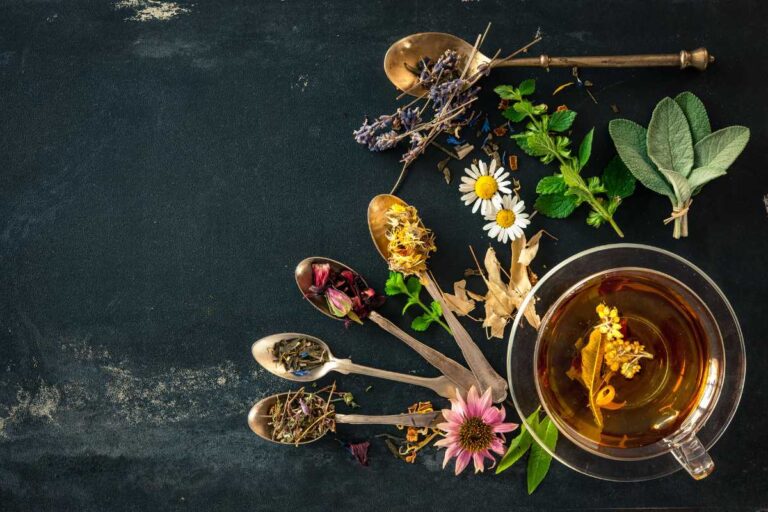What Herbs Are Most Useful to Grow? Exploring the Top 10 Herbs for Your Kitchen Garden
What Herbs Are Most Useful to Grow? Exploring the Top 10 Herbs for Your Kitchen Garden
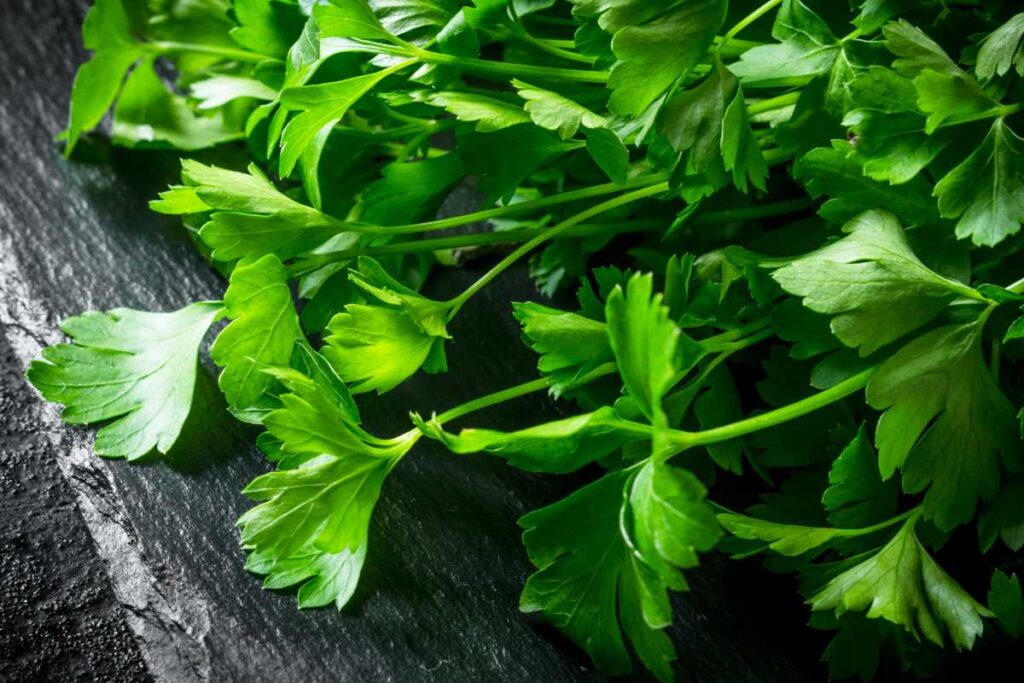
Enhance the flavor and freshness of your dishes with homegrown herbs. Save money by growing your own herbs instead of buying them from the store. Enjoy the convenience of having a readily available supply of herbs right in your kitchen garden. Experience the satisfaction and joy of nurturing and harvesting your own useful herbs.
Homegrown herbs not only add a burst of taste to your culinary creations but also bring a touch of nature into your home. By cultivating herbs in your own backyard or even on a windowsill, you can elevate any dish with their aromatic essence.
Moreover, growing herbs at home allows you to have complete control over the quality and freshness, ensuring that you are using the finest ingredients for your family’s meals.
Not only is it cost-effective to grow your own herbs, but it also provides an opportunity for bonding with loved ones. Involving family members in planting, tending, and harvesting these green wonders fosters teamwork and creates lasting memories.
As an added bonus, children learn about nature’s bounty firsthand while developing essential skills like responsibility and patience.
So why rely on store-bought herbs when you can cultivate an abundant supply right at home? With just a little effort and care, you can transform your kitchen into a herb haven that not only elevates flavors but also brings joy to every mealtime experience.
| Herb | Explanation |
|---|---|
| Basil | Basil is a versatile herb that adds a fresh and aromatic flavor to dishes. It pairs well with tomatoes, making it a great addition to pasta sauces and pizzas. |
| Rosemary | Rosemary has a strong and distinct flavor that enhances the taste of roasted meats and vegetables. It can also be used to infuse oils and vinegars. |
| Thyme | Thyme is a fragrant herb that adds a savory and earthy flavor to various dishes. It works well in soups, stews, and marinades. |
| Mint | Mint is a refreshing herb that is commonly used in beverages, such as mojitos and mint juleps. It can also be added to salads and desserts for a burst of flavor. |
| Parsley | Parsley is a versatile herb that can be used as a garnish or as an ingredient in various dishes. It adds a fresh and slightly peppery taste to salads, soups, and sauces. |
| Cilantro | Cilantro, also known as coriander, is commonly used in Mexican, Indian, and Asian cuisines. It has a bright and citrusy flavor that pairs well with spicy dishes. |
| Dill | Dill has a unique flavor that is often associated with pickles. It is commonly used in salads, dips, and sauces. It also works well with fish and potatoes. |
| Oregano | Oregano is a staple herb in Italian cuisine. It has a strong and slightly bitter flavor that complements tomato-based dishes, pasta, and pizza. |
| Sage | Sage has a robust and earthy flavor that is commonly used in stuffing, poultry dishes, and sauces. It also pairs well with butter and cheese. |
| Chives | Chives have a mild and onion-like flavor that is commonly used as a garnish or in salads. They can also be used in soups, stews, |
Tired of struggling with outdoor herb gardens in unpredictable weather? Discover the secret to successful herbal gardening indoors and enjoy fresh herbs year-round. Check out our article now!
Must-Have Herbs for Your Kitchen Garden
Basil: A Versatile Herb That Adds a Delightful Aroma to Various Cuisines
Basil is undoubtedly one of the most popular and versatile herbs you can have in your kitchen garden. Its delightful aroma and distinct flavor make it a must-have herb for any culinary enthusiast. Whether you’re preparing Italian dishes, Thai curries, or even a refreshing summer salad, basil adds that extra touch of freshness and fragrance.
There are several varieties of basil to choose from, including sweet basil, Thai basil, and lemon basil. Each variety offers its own unique flavor profile, allowing you to experiment with different taste combinations. You can easily grow basil from seeds or purchase young plants from your local nursery.
To ensure optimal growth, plant your basil in well-draining soil and provide it with plenty of sunlight. It thrives in warm conditions and requires at least six hours of direct sunlight each day. If you don’t have access to an outdoor garden space, don’t worry! Basil also grows exceptionally well in containers on a sunny windowsill.
Rosemary: Known for Its Strong Flavor and Ability to Enhance Roasted Meats and Vegetables
If you’re looking to add depth and robustness to your dishes, rosemary is the perfect herb for you. Known for its strong flavor and pine-like aroma, rosemary pairs exceptionally well with roasted meats and vegetables. It adds a delightful earthiness that takes your culinary creations to the next level.
Rosemary is a perennial herb that thrives in full sun but can tolerate some shade as well. It prefers well-drained soil with moderate moisture levels. You can start growing rosemary from seeds or purchase young plants from a reputable source.
Consider using rosemary sprigs as skewers when grilling kebabs or infusing olive oil with its aromatic essence for marinades or dressings. This versatile herb can also be dried and stored for later use, ensuring you have a fresh supply year-round.
Mint: Perfect for Refreshing Beverages, Desserts, and as a Garnish for Savory Dishes
With its invigorating scent and refreshing flavor, mint is an essential herb to have in your kitchen garden. It adds a burst of freshness to beverages like mojitos or homemade iced tea. Mint is often used in desserts such as ice cream, chocolate treats, and fruit salads.
Mint is a fast-growing herb that can sometimes take over the garden if not contained. To prevent it from spreading excessively, consider planting it in containers or using it as a ground cover. This way, you can easily control its growth while still enjoying its benefits.
To grow mint successfully, provide it with moist soil and partial shade. While it can tolerate full sun conditions, some afternoon shade can help prevent the leaves from wilting during hot summer days. You can start mint from seeds or buy young plants from nurseries.
Thyme: Adds Depth to Soups, Stews, and Marinades with Its Earthy Taste
Thyme is a versatile herb that can be used in a variety of dishes to add depth and flavor. In addition to soups, stews, marinades, and roasted vegetables, thyme can also be used in sauces, dressings, and even desserts.
Its earthy taste pairs well with a wide range of ingredients, making it a popular choice among chefs and home cooks alike. Thyme is particularly delicious when combined with other herbs like rosemary and sage, creating a fragrant and savory blend of flavors. It can also be used as a garnish, adding a touch of freshness to finished dishes.
Whether you’re cooking a hearty winter stew or a light summer salad, thyme is a go-to herb that will elevate your culinary creations to the next level.
Parsley: Versatile Herb for Culinary Delights
Parsley is a versatile herb that adds a burst of flavor to various culinary delights. Not only does it enhance the taste of dishes, but it also offers numerous health benefits. Rich in vitamins A, C, and K, parsley is an excellent addition to salads and sauces.
The fresh taste of parsley complements a wide range of dishes, making it a staple in many kitchens. Whether sprinkled over pasta or used as a garnish for fish and poultry, this herb elevates the flavors with its vibrant green leaves.
Its versatility extends beyond just being a garnish; parsley can be incorporated into stews and soups to add depth and freshness.
Apart from its culinary uses, parsley has several other advantages. Did you know that this humble herb can serve as a natural breath freshener? Thanks to its chlorophyll content, chewing on some parsley leaves can help combat bad breath.
So next time you have garlic-heavy meal, reach for some fresh parsley to cleanse your palate.
In addition to its breath-freshening properties, parsley possesses anti-inflammatory qualities that may benefit overall health.
The herb contains compounds like apigenin and myristicin which have been studied for their potential anti-inflammatory effects. Incorporating parsley into your diet could potentially help reduce inflammation in the body.
There are several varieties to choose from. Flat-leaf (Italian) parsley is commonly used in cooking due to its robust flavor, while curly-leaf parsley adds an attractive touch when used as a garnish. Both varieties are easy to grow in containers or garden beds.
To grow parsley successfully, find a sunny spot in your garden or balcony where it will receive at least six hours of sunlight each day.
It thrives in well-drained soil enriched with organic matter such as compost or aged manure. Sow the seeds directly in the soil, keeping them moist until they germinate. Once the seedlings have sprouted, thin them out to allow proper growth.
When harvesting parsley, snip the outer leaves from the plant rather than removing entire stems. This will encourage continuous growth and ensure a fresh supply of parsley throughout the season.
Store freshly picked parsley in a container with water or wrap it in a damp paper towel and place it in the refrigerator for extended freshness.
Dill: Fragrant and Flavorful Herb to Cultivate
Dill, with its distinct aroma reminiscent of licorice or fennel, is a fragrant and flavorful herb that can elevate the taste of various dishes. Whether you’re pickling cucumbers or preparing seafood delicacies, dill’s unique scent and flavors make it an essential addition to your culinary endeavors.
The leaves of the dill plant are not only a delight to the senses but also offer numerous health benefits. Packed with antioxidants, these leaves promote good digestion and help reduce inflammation in the body.
Incorporating dill into your meals can be a simple yet effective way to enhance both taste and well-being.
But the usefulness of dill doesn’t stop at its leaves; its seeds also hold significant value. Dill seeds can be used as a spice, adding depth and complexity to various dishes.
They can be infused into oils, creating aromatic concoctions that lend an extra burst of flavor when drizzled over salads or used for cooking.
One of the reasons why dill is highly favored by gardeners is its adaptability. This herb thrives in different environments, making it suitable for both indoor and outdoor cultivation.
When growing dill indoors, ensure it receives ample light by placing it near a south-facing window where it can bask in the sun’s rays. Outdoors, partial shade in the southern regions provides an ideal balance for optimal growth.
To cultivate dill successfully, you’ll need to consider its watering needs as well. While dill requires consistent moisture during germination and establishment stages, excessive watering can lead to root rot. Striking a balance between providing enough water without drowning the plant is crucial for healthy growth.
Whether you choose to grow dill from seeds or seedlings, following these steps will help you cultivate this useful herb:
- Prepare the soil: Ensure your soil is well-draining and enriched with organic matter to provide the best growing conditions for dill.
- Plant the seeds or seedlings: Sow the seeds directly into the soil or transplant seedlings, spacing them 12-18 inches apart.
- Water appropriately: Keep the soil consistently moist during germination and establishment, watering when the top inch of soil feels dry.
- Thin out overcrowded plants: Once your dill plants reach a height of 4-6 inches, thin them out by removing excess seedlings to prevent competition for resources.
- Harvesting: Start harvesting dill leaves when they are mature enough to be used in your recipes. Regularly trimming the plant encourages bushier growth.
Cilantro: Must-Have Herb for Fresh and Tasty Dishes
Cilantro, also known as coriander, is a must-have herb for anyone who loves to add a burst of flavor to their culinary dishes. Whether you enjoy Mexican, Indian, Thai, or Middle Eastern cuisines, cilantro’s bright citrus-like taste is sure to enhance your favorite recipes.
One of the reasons cilantro is so popular in these cuisines is because of its versatility. The leaves and stems of this herb can be used in various ways to create delicious dishes. From salsas and salads to curries and soups, cilantro adds a refreshing element that elevates the overall taste.
Not only does cilantro make your meals more enjoyable, but it also packs a nutritional punch. The leaves and stems are rich in vitamins A, C, and K, which are essential for maintaining good health. Cilantro contains antioxidants that help protect your body against harmful free radicals.
Apart from its nutritional value, cilantro is believed to have detoxifying properties that support overall well-being. It is said to aid in removing heavy metals from the body and promoting healthy digestion. Incorporating cilantro into your diet can be a simple way to boost your overall health.
If you’re wondering how best to use cilantro in your cooking adventures, here are some ideas:
- Add freshly chopped cilantro leaves as a garnish on top of tacos or grilled meat for an extra pop of flavor.
- Mix it into homemade salad dressings for a vibrant twist on traditional salads.
- Blend it with lime juice and garlic to create a zesty marinade for chicken or fish.
- Sprinkle chopped cilantro over roasted vegetables before serving for added freshness.
- Use it as an ingredient in homemade salsa or guacamole to give them an authentic taste.
In addition to its culinary uses, cilantro can also be grown easily at home. Whether you have a spacious garden or just a small balcony, cilantro can thrive in pots or raised beds. It’s a low-maintenance herb that requires regular watering and well-drained soil to flourish.
Bergamot (Bee Balm): Beautiful and Beneficial Herb
Bergamot, also known as Bee Balm, is a versatile herb that not only adds beauty to your garden but also offers numerous benefits. Let’s explore why this herb is a must-have in any herb garden.
- Aromatic qualities: Bergamot is known for its delightful fragrance, which is reminiscent of citrus fruits. The aromatic oils found in the leaves and flowers of this herb can be used to make herbal teas, potpourri, and scented oils. The sweet and refreshing scent of bergamot can uplift your mood and create a pleasant atmosphere in your home.
- Medicinal properties: Bergamot has been used for centuries in traditional medicine for its various health benefits. It is rich in antioxidants, which help protect the body against damage from harmful free radicals. The herb is also known for its antimicrobial and anti-inflammatory properties, making it useful in treating minor wounds and skin infections.
- Digestive aid: Drinking bergamot tea can help soothe digestive issues such as indigestion, bloating, and stomach cramps. The herb has carminative properties, which can help relieve gas and promote healthy digestion. It is also believed to stimulate the production of digestive enzymes, aiding in the breakdown of food.
- Immune booster: Bergamot is packed with vitamins and minerals that can strengthen the immune system. It contains vitamin C, which is known to enhance the production of white blood cells and boost the body’s defense against infections. Including bergamot in your diet or using it as a herbal remedy can help support your overall immune health.
- Pollinator attractant: One of the reasons why bergamot is also called Bee Balm is because it is highly attractive to bees, butterflies, and other pollinators. The vibrant flowers of this herb serve as a valuable source of nectar and pollen for these beneficial insects. By planting bergamot in your garden, you can help support pollinator populations and contribute to
Vibrant Flowers that Attract Pollinators
One of the standout features of bergamot is its vibrant flowers, which come in various colors such as red, pink, and purple. These eye-catching blooms serve as a magnet for pollinators like bees and butterflies, making your garden a haven for these essential creatures.
By planting bergamot, you’re not only adding visual appeal but also providing a valuable food source for pollinators.
Aromatic Teas with Citrusy Flavor
Beyond its ornamental value, bergamot leaves can be harvested and used to brew aromatic teas. The leaves emit a delightful citrusy scent when crushed or steeped in hot water.
The resulting tea offers a refreshing flavor profile reminiscent of citrus fruits like oranges and lemons. Whether enjoyed hot or cold, bergamot tea provides a delightful sensory experience.
Antimicrobial Properties for Health Benefits
In addition to its pleasant aroma and taste, bergamot possesses antimicrobial properties that may contribute to your well-being. Studies have shown that certain compounds found in this herb exhibit antimicrobial activity against various pathogens.
While further research is needed to fully understand its potential benefits, incorporating bergamot into your diet or using it topically may help support your body’s natural defenses against certain infections.
Calming Effects for Herbal Remedies
Another notable characteristic of bergamot is its calming effects on the mind and body. This herb has long been used in traditional herbal remedies due to its soothing properties.
It can be brewed into teas or incorporated into aromatherapy practices to promote relaxation and alleviate stress. Adding bergamot to your herbal repertoire can provide a natural way to unwind and find tranquility in today’s fast-paced world.
It thrives best in a sunny spot with well-drained soil. Ensure that the plant receives ample sunlight throughout the day to encourage healthy growth. Regular watering and occasional pruning will help maintain its vitality.
To make the most of this herb, you can harvest both the leaves and flowers. The leaves can be used fresh or dried for teas, while the flowers can be added as a decorative touch to salads or used as edible garnishes.
Bergamot’s versatility allows you to explore various culinary possibilities while enjoying its aesthetic appeal.
Sage: Savory Herb with Medicinal Properties
Sage, a versatile and aromatic herb, is not only known for its culinary uses but also for its remarkable medicinal properties. With a strong flavor that pairs well with roasted meats, stuffing, and hearty soups, sage adds depth and richness to various dishes. However, its benefits extend far beyond the kitchen.
This medicinal herb contains compounds with antioxidant and anti-inflammatory properties that promote overall wellness. These beneficial compounds help protect the body against oxidative stress and reduce inflammation, which can contribute to various health conditions.
One popular use of sage is in the form of herbal remedies. Sage tea, made by steeping sage leaves in hot water, has long been used as a natural remedy for sore throat or mouth inflammation. The soothing properties of sage tea provide relief from discomfort while helping to reduce inflammation in these areas.
Moreover, research suggests that sage essential oil may have cognitive benefits. Studies have shown that inhaling the aroma of sage essential oil can improve memory and cognitive function. This makes it an intriguing option for those looking to support brain health naturally.
In addition to its own medicinal properties, sage also complements other herbs with similar benefits. Combining sage with rosemary creates a powerful duo of herbs known for their healing properties. Rosemary is another medicinal herb that has been used traditionally to alleviate various ailments such as digestive issues and muscle pain.
It is relatively easy to cultivate. Sage plants thrive in well-drained soil under full sun exposure; however, they can tolerate partial shade as well. This adaptability makes them suitable for different growing conditions.
To grow your own sage plant:
- Choose a sunny spot in your garden or use containers if space is limited.
- Ensure the soil is well-drained by adding organic matter or sand if necessary.
- Plant seedlings or propagate from cuttings during spring or early summer.
- Water the plants regularly, allowing the soil to dry out between waterings.
- Prune the sage plant regularly to encourage bushier growth and prevent it from becoming woody.
Exploring the Benefits of Growing Useful Herbs
We started with parsley, a versatile herb that adds flavor and freshness to a wide range of culinary delights. Then, we delved into dill, a fragrant herb known for its unique taste and aroma that can elevate your dishes to new heights.
Cilantro also made the list as a must-have herb, perfect for adding a burst of freshness to your favorite recipes.
We didn’t stop there! We introduced you to bergamot, also known as bee balm, which not only adds beauty to your garden but also attracts beneficial pollinators. Lastly, we discussed sage, a savory herb with medicinal properties that has been used for centuries in various cultures.
By growing these useful herbs in your own garden, you can enhance the flavors of your meals while enjoying the satisfaction of cultivating fresh ingredients right at home. So why wait? Start planning your herb garden today and experience the joy of cooking with these flavorful additions!
FAQs
How do I care for these herbs?
To ensure the health and vitality of these herbs, it’s important to provide them with proper care. Most herbs prefer well-drained soil and require regular watering. They thrive in areas with ample sunlight. Be sure to research each specific herb’s care requirements for optimal results.
Can I grow these herbs indoors?
Yes! Many of these herbs can be grown indoors as long as they receive sufficient sunlight or are placed under grow lights. You can use pots or containers filled with well-draining soil to cultivate them on windowsills or in other well-lit areas inside your home.
Are these herbs easy to grow for beginners?
Absolutely! These herbs are generally considered beginner-friendly due to their adaptability and resilience. With proper care and attention to their specific needs, even novice gardeners can successfully grow these herbs.
Can I use these herbs for medicinal purposes?
While some of these herbs, like sage, have traditional medicinal uses, it’s important to consult with a healthcare professional or herbalist before using them for any specific health concerns. They can provide guidance on safe and appropriate usage.
Where can I find seeds or seedlings for these herbs?
You can find seeds or seedlings for these herbs at local nurseries, gardening centers, or online stores specializing in herb plants and seeds. Many farmers’ markets also offer a variety of herb plants during the growing season.

